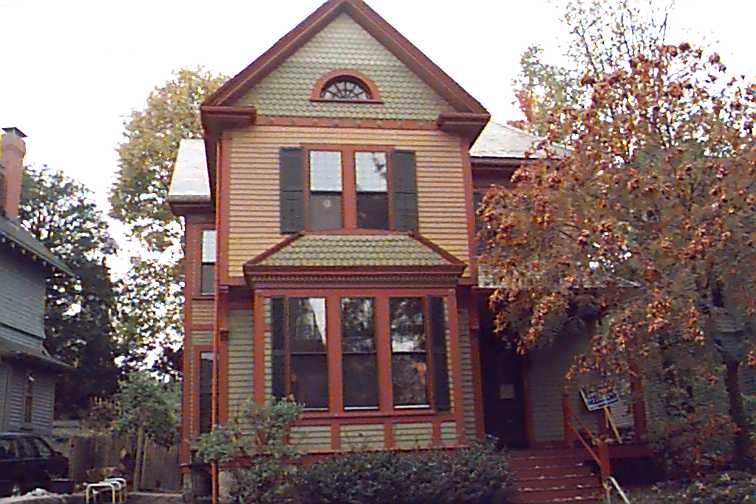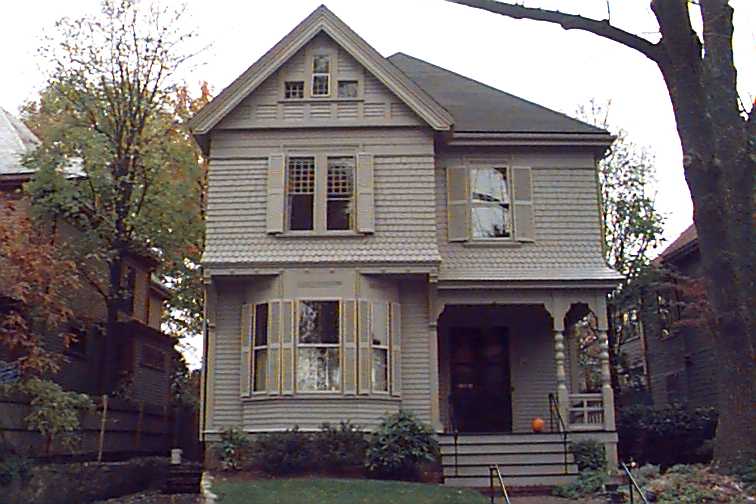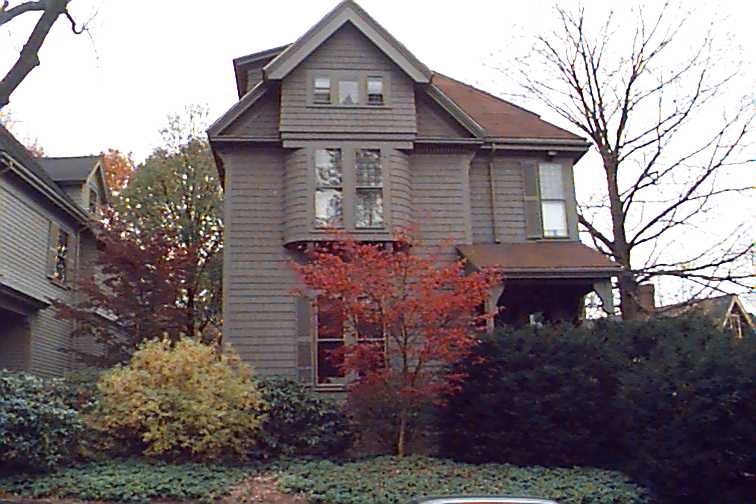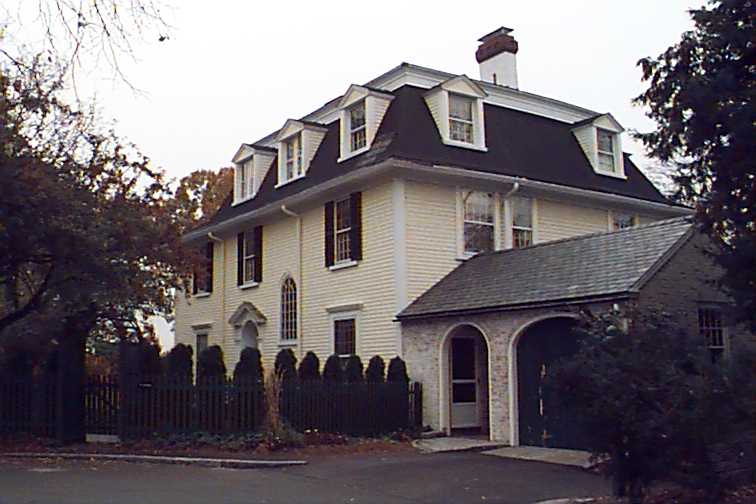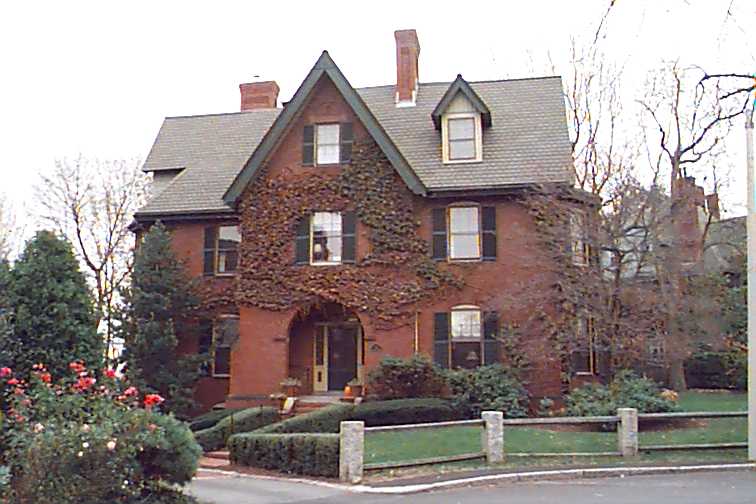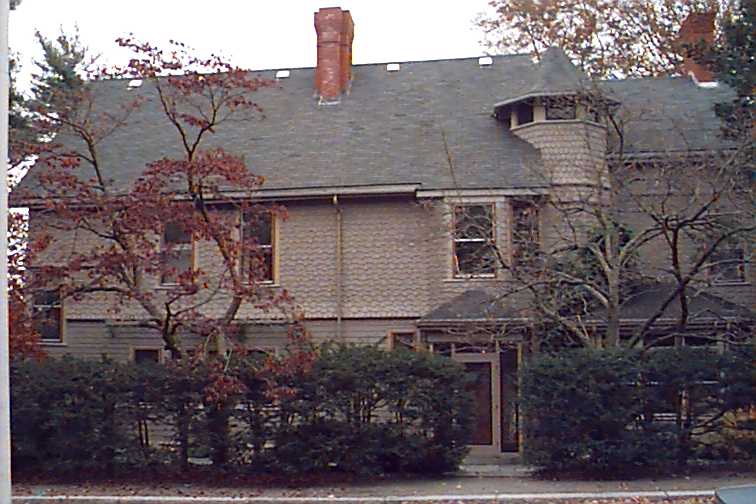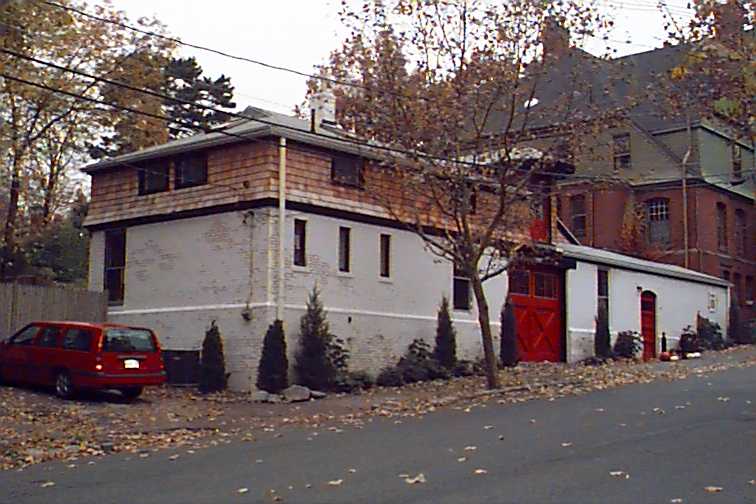| < previous | map | next > |
Laid out as Summit Street in 1871, Edgehill Road is one of the most attractive cul-de-sacs in Brookline. As one walks along, notice the landscaping which, in many instances, retains its Victorian character. Perhaps most immediately striking is the diversity of trees, shrubs, and vines which produces subtle blendings and contrasts of foliage color, shape, and texture. The Victorians were as fascinated by the profusion of botanical varieties available in the second half of the nineteenth century as they were with the complexity of architectural patterns. Closer inspection reveals other elements typical of Victorian landscaping–curvilinear design, irregularity to achieve a picturesque quality, and the careful creation of miniature vistas to enhance a feeling of seclusion. “Every walk has a purpose” was the dictum of the Victorian gardener.
33
Nicknamed ‘Candler’s Jam’, the set of four Queen Anne shingle and clapboard houses on the right (numbers 17,19,25 and 29) were built in close proximity to each other by John Candler.
34
33 Edgehill Road was designed and lived in by Walter Kilham, an architect with the firm of Kilham and Hopkins and author of Boston After Bulfinch. This 1913 house is a stuccoed Regency design with hipped roof and tall but simple chimneys.
35
Next door, 41 Edgehill Road exemplifies the fashionable practice of altering buildings to contemporary tastes. Here the clapboard mansard roofed home of Samuel Cabot, which dates to 1854 has been ‘colonialized’ with pedimented dormers and doorway, a fanlight, cornerboards, and a round arched window.
36
The house at 44 Edgehill Road is a brick Queen Anne style structure by Robert Peabody who designed his own house nearby. It was constructed for Peabody’s friend, Moorfield Storey, a lawyer and president of the American Bar Association.
37
Note also 36 Edgehill Road, a brick and shingle building with half-timbering in the front gable. This stucco and wood patterning typical of late Queen Anne design suggest the renewed interest in English medieval motifs.
38
In 1881 Edward Cabot and Francis Chandler designed the house at 26 Edgehill Road for Samuel Cabot, Jr. Here one sees the turret, diamond paned windows, bays, and the multiple shingle patterns of the period.
39
The last two buildings on the right, 20 Edgehill Road and 112 High Street, were built for Charles Storrow, head of a cotton brokerage firm. Both of these brick and shingle houses were designed by Cabot and Chandler, the former being Storrow’s father-in-law who lived on High Street in the Point. At 20 Edgehill Road, note the gambrel roof, turret, prominent chimney and eyebrow dormer. Frederick Law Olmsted’s landscaping is evident in the pastoral setting-with the heavy stone wall, rolling hills and a quaint stone bridge.
40
Walking down Cumberland Avenue, note the imposing facade of 112 High Street, in contrast to the small stature of its renovated carriage house at 50 Cumberland Avenue.
41
One could easily be misled by number 47 across the street. It was designed in 1928 by Kilham, Hopkins and Greely in imitation of seventeenth and eighteenth century colonial homes.
| < previous | map | next > |


